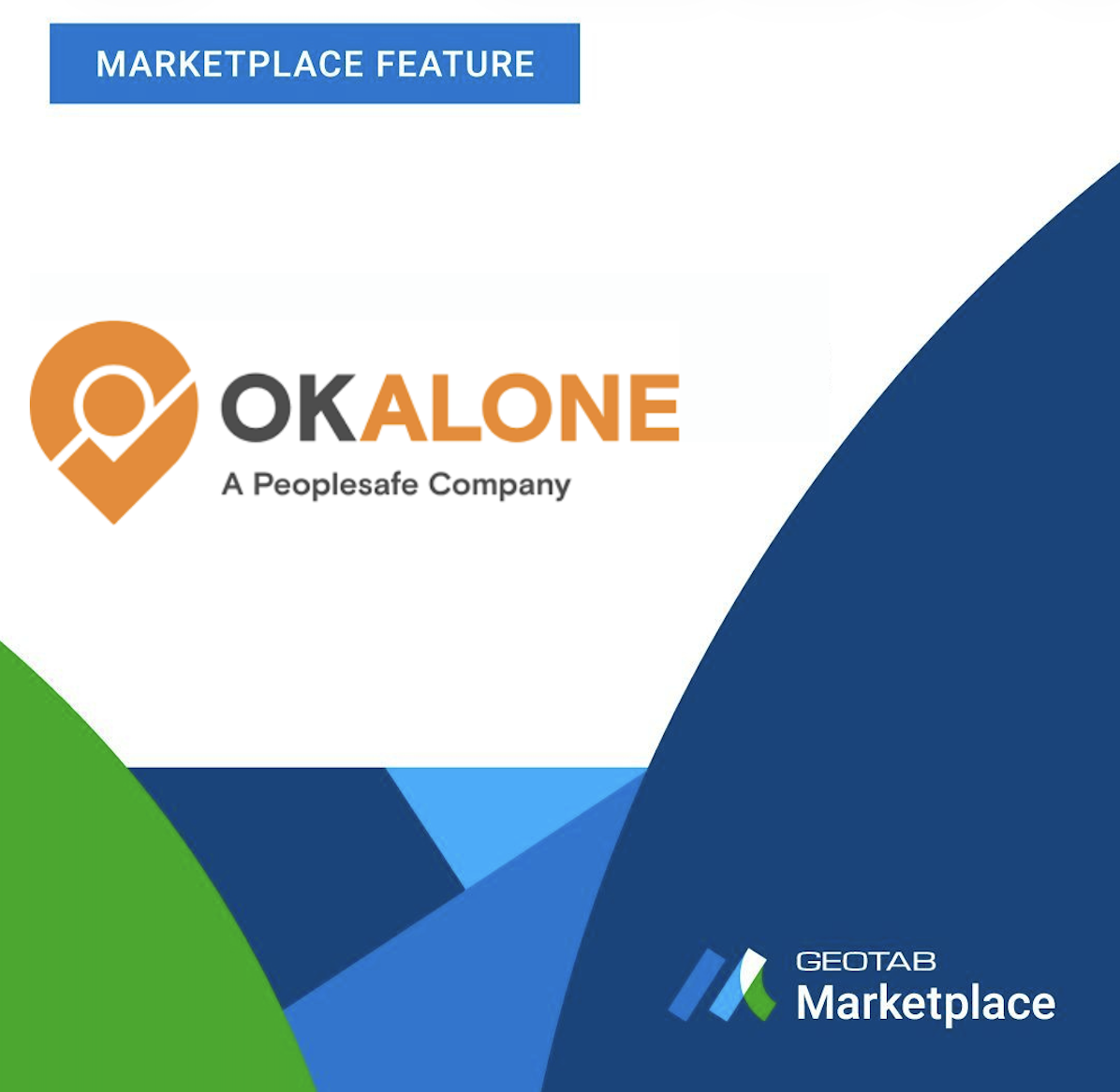Building a self-sustaining school bus driver safety program with Geotab Vitality
Is your school district still relying on corrective measures to fix driver behavior? Learn how to create a better fleet safety program that excites your drivers and keeps them engaged with Geotab Vitality.

Jun 20, 2025

Key Insights
- Safety in student transportation is non-negotiable. A system built on positive reinforcement effectively engages your bus drivers.
- Geotab Vitality can create lasting behavior change in your fleet operations through benchmarking and driver rewards.
- Position your bus driver safety program for success with the best practices we’ve shared.
School bus driver safety is just as important as student safety, but is often not given the same consideration. Safer drivers result in safer students, ultimately creating better outcomes for your school district. But what’s the best strategy to help protect riders, drivers and other motorists during daily operations? The answer lies in developing a self-sustaining safety program centered around the driver and their needs. By embracing an empowerment-based driver coaching approach, rather than an enforcement-based one, you can develop a school bus fleet safety program that is built to last.
In this article, we’ll explain the tenets of an effective fleet safety program and also show you how Geotab Vitality, our all-in-one driver coaching and rewards platform, can help you build a bus safety program that elevates your drivers (and their performance). In turn, you can drive long-term consistent improvement in your operations and better protect your passengers.
Why is school bus driver safety so important?
School bus driver safety is critical, because if it’s treated as an afterthought, problems like these can arise:
- Threats to both student and driver well-being - Driver mistakes are often regarded as the single largest risk factor for collisions. However, it’s hard to know your fleet’s collision risk if you don’t track behaviors like speeding, harsh braking, aggressive cornering, or driver distraction. Engaging in risky driving behaviors like these can exacerbate the potential for driver and passenger harm, making them essential to avoid.
- Potential liability risks - With increased collision probability comes a greater liability risk. As a result, unplanned costs from collision settlements (or even nuclear verdicts) could be on the horizon for your district. It’s important to establish a bus fleet safety program to not just help protect your students and drivers, but also reduce risks to your district’s budget and reputation.
- Damage to school buses - Poor driver safety can also wear down bus components faster or result in expensive collision-related repairs being needed. For example, routinely slamming on the brakes can wear down pads and rotors faster, while repeated harsh acceleration over time can place unnecessary stress on engines. Additionally, the costs to fix a damaged school bus after a collision can vary drastically, depending on its severity. Help prevent unplanned maintenance and repair costs by working to reduce risky driving in your school bus fleet.
- Unplanned downtime - Repairs that stem from unsafe driving cause more problems than just high costs, forcing you to contend with route disruptions and resource shortages. Avoid having to operate with a reduced fleet by protecting your vehicles through consistent, responsible driving.
Establishing a driver-focused safety program can help to steer clear of challenges like these from affecting your operations. However, in order for the program to deliver continued, long-term engagement, it’s important for it to be built on a culture of appreciation, not correction in the eyes of your drivers.
Unlocking deeper, more engaged drivers through positive behavior change
Unlike traditional fleet safety programs that rely on simple measurement and enforcement, a new approach is needed that connects with the driver on a deeper level. To help develop a fleet safety strategy that resonates with your drivers, it’s important to thread these principles throughout your program’s framework.
- Scalability: Develop your program in a way that it can easily be expanded across all areas of your student transportation operations and engage every driver.
- Solution-oriented: Clearly define your program’s safety goals and use fleet management tools to help you measure your fleet’s progress toward each objective.
- Support-focused: Uplift your drivers with a positive approach to one-on-one coaching, rather than making them feel as if their performance is constantly being criticized.
- Engagement and fair grading scales: Use impartial fleet data and clear thresholds to keep your drivers accountable to the program. Keep drivers invested in the program by rewarding their improvement.
- Administrative simplicity: Remove complexity and manual tasks from your safety program with technology, whenever possible. A fleet safety program that is simple to manage is easier to stick to long-term.
- Intervention and improvement: A key reason that many fleet safety programs fail is because drivers may feel that the program is overly corrective in nature. Even worse, according to a Gallup study, employees who don’t feel recognized enough are two times more likely to say they’ll quit in the coming year. By conducting regular one-on-ones with your drivers that highlight their improvements (not just their shortcomings), you can boost school bus driver retention and motivate drivers to embrace the program.
Passenger safety is a substantial responsibility for bus drivers across all industries, and the pressure to drive well may be affecting their mental health. In one particular study, it was discovered that 13.3% of surveyed bus drivers reported anxiety symptoms and 9.9% mentioned feeling depressed. Across the people transportation industry at large, the stress of the job is taking its toll on drivers, and enforcement-based driver safety programs may be contributing to these concerns as well. If drivers don’t feel they’re being supported or recognized enough for improvement, they may disengage with a fleet safety program. And that’s only one of the consequences: You could also risk losing drivers altogether. Concerns of a nationwide school bus driver shortage are growing, with a 12.2% drop-off in school bus drivers being observed from September 2019 to September 2024. Given this decline, retaining your top school bus drivers is essential for safer, more consistent student transportation. Make your drivers feel valued to help combat driver attrition.
It’s time for a radical change in the ways we approach school bus safety and driver coaching. But how do we move away from corrective practices that deliver mixed results, and instead toward something more sustainable long-term? Simple: Through nudge-based coaching that rewards incremental improvement and elevates your drivers.
Strategies for crafting school bus safety programs that are built to last
It’s clear that drivers respond better to a coaching program that highlights positive progress. However, there’s more that your school bus driver safety program should include if you want to drive exceptional results. Develop a system that creates lasting behavior change by following these strategies below.
Deploy a fleet management solution: Analyze your fleet’s current safety standing by embracing school bus fleet management technologies. For example, Geotab’s solution offers the Safety Center, which allows you to monitor harsh driving trends and measure collision risk with AI-enabled insights. You can also compare your bus fleet’s safety metrics against anonymized insights from other similar fleets to pinpoint which safety categories you need to improve in most. Additionally, you can monitor school bus interior safety with internal-facing cameras.
Reward safe driving: Use a driver coaching and rewards solution to gamify safe driving and create a culture of friendly competition amongst bus drivers for who can be the safest. Offering incentives is another way to keep your bus drivers on a trajectory of success and enables the program to sustain itself, with drivers motivated to keep unlocking rewards over time.
Study collision risk trends over time: While your bus drivers are rewarded for safer driving, it’s important to always look at how your collision risk is trending over time. Collision risk indicates how likely one of your school buses is to be involved in an incident over its next 100,000 kilometers or miles. As your drivers continue to improve, make sure you’re observing how the positive changes are affecting your fleet’s overall collision probability.
Receive real-time alerts: If a collision involving one of your district’s buses does occur, you’ll want to be made aware as soon as possible. Get informed earlier and take more decisive action with major and minor collision detection. These fleet management features will alert you whenever a bus experiences a collision and indicate its severity. After assistance has been dispatched and the health of your passengers is accounted for, you can also use Geotab’s collision reconstruction capability to identify what caused the impact and develop a detailed post-incident report.
Thoroughly document bus inspections: In tandem with driver rewards and collision monitoring, you’ll want a more streamlined way to conduct driver vehicle inspection reports (DVIRs). Routinely completing these reports helps you remain compliant, verify that no child is left behind and keep your vehicles in top operational condition. Geotab’s DVIR capability helps guide your drivers effortlessly through the inspection process, offering a seamless digital method for collecting and managing reports.
Collaborate with parents: To build stronger public trust, share how your bus driver safety program is improving student safety with your district’s residents. Additionally, garner parent participation in council meetings and listen to their feedback. Collaborating with parents will help them feel truly involved in their children’s safety and help you identify future improvement opportunities through outside opinions.
Monitor your program, but don’t micromanage it: As your fleet safety program develops, you’ll want to keep your drivers motivated to always drive safer and survey the results at a high level, but not overcomplicate things. Track improvements and provide support to your employees when needed, but refrain from becoming overly involved, especially if you are using technologies to support your fleet safety program’s goals.
To help you tangibly recognize driver improvements and build a self-sustaining school bus driver safety program, consider Geotab Vitality. This turnkey driver coaching platform drives lasting behavior change by nudging your bus drivers to improve their performance through incentivization. Drivers can unlock rewards from a number of well-known retailers by reaching their weekly goals and dynamically progressing to new Driver Status levels over time in the app. By making drivers feel consistently rewarded, recognized and advocated for, Geotab Vitality helps you motivate them to go the extra mile.
How Geotab Vitality elevates your school bus driver safety program
No matter how safe a bus operator currently drives, there’s always room for improvement. Geotab Vitality combines AI-enabled safety data with proven methods for changing behavior, helping you turn good drivers into great ones and boost retention. As a result of safer school bus operations, you’ll also help create a safer driving environment for other motorists on the road as well.
Geotab Vitality additionally handles virtually all of the responsibility of coordinating a bus driver rewards program for you. From individualized goal-setting to dispensing rewards, the solution replaces intricate manual management, so your fleet managers can focus on other important functions. It’s a best-in-class platform that can help you drive down risks, costs and attrition in your school bus fleet.
Foster lasting results with Geotab Vitality
As we’ve discussed, it takes a concerted effort on behalf of both your fleet managers and and your drivers to make student safety a priority. While your bus drivers are already fully bought-in to safe student transportation operations, give them an extra level of motivation to raise their performance with Geotab Vitality. Through tangible rewards and individualized goal-setting, you can connect with your drivers on a deeper level and create steadfast, positive behavior change.
Learn more about how Geotab Vitality can help you reduce risk, turnover and expenses in your school bus fleet operations by reaching out to us today.

Subscribe to get industry tips and insights
Frequently Asked Questions
Geotab Vitality helps produce value that benefits both fleets and society as a whole by creating safer drivers across the entire world. By raising the performance of drivers on a global scale, this solution will help reduce the economic burden of collisions and subsequent risks to human health.
Yes. In addition to its applications for school bus fleets, Geotab Vitality can also help fleets in the commercial sector enhance driver safety and limit risk. Commercial segments that can benefit from this solution include (but are not limited to):
- Field services
- Vocational
- Transportation and logistics
- Food and beverage
- Rental and leasing
- Last-mile delivery and courier services
- Commercial waste collection
- Construction
A school bus driver safety program is a system put in place by school districts to help them maintain accountable, protected and responsible student transportation operations. Safety programs for bus drivers can involve tracking driving behaviors and collision risk, providing one-on-one driver coaching and establishing a fleet safety council for enhanced oversight. Through a defined bus safety program, your district can put the well-being of both students and drivers first across all facets of operations.
School transportation safety technologies can be instrumental for monitoring fleet safety metrics and reducing risk. Learn more about the benefits of driver safety solutions for schools by reading our blog post.

Content Marketing Manager at Geotab
Table of Contents
Subscribe to get industry tips and insights
Related posts
.png)
From the North Pole to the Highway: How AI and Predictive Insights Get Drivers Home for the Holidays
December 16, 2025
2 minute read
.jpg)
.png)
AI dash cams vs. traditional: Which delivers better fleet safety?
December 8, 2025
5 minute read

Elevating Worker Safety Through Simplicity: The OK Alone Story
December 3, 2025
2 minute read

The $4B Crisis: Video Intelligence as the Answer to Fleet Distraction
December 2, 2025
3 minute read

Four seasons of fleet intelligence with Geotab's Public Works solution
November 7, 2025
2 minute read